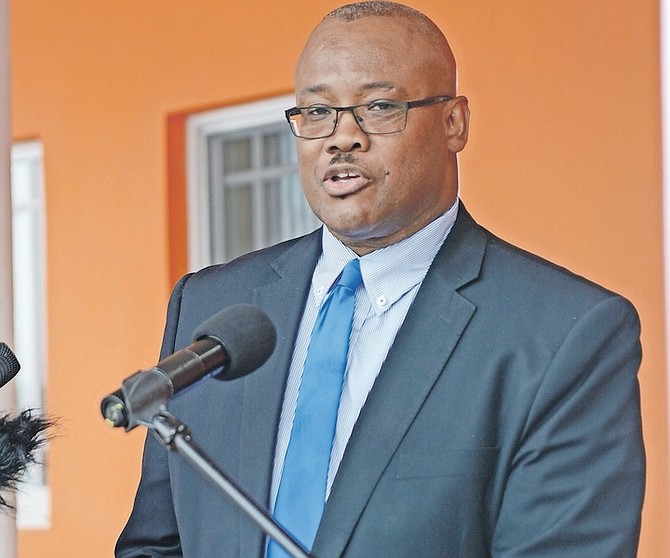By LEANDRA ROLLE
Tribune Staff Reporter
lrolle@tribunemedia.net
THE deadly Stony Coral Tissue Loss Disease (SCTLD) continues to ravage corals in The Bahamas, affecting up to 90 per cent of corals in some areas.
Environment and Natural Resources Minister Vaughn Miller said treating the corals with antibiotics does not go far enough to solve the problem. He said the Davis administration had established a task force to tackle the issue more aggressively.
He spoke during yesterday’s conclave at Breezes, where officials discussed SCTLD and its impact on corals in The Bahamas.
Valeria Pizarro, senior researcher at Perry Institute for Marine Science, discussed the latest findings on the disease.
She said that in some areas, 90 per cent of the corals have been affected by SCTLD.
“What we’re seeing with stony coral tissue disease is that it affects more species than others, so it has a level of susceptibility, so the highly susceptible species are the first to get infected and the first to die, so for those species, we are looking in some areas for local extinctions and these are important reef corals but they are not the main reef builders,” she said.
“However, between the high susceptibility, not the highly (susceptible ones) but the ones that are susceptible are the brain corals and the star corals and those species, and I’d say that in the reefs that we have assessed in some areas, we have lost 90 per cent of those corals. That means that we still have the structures right now because they die but over time, we will have erosion and they will erode and then is when we will start losing all of the reef’s functionality and that will affect Bahamians and everyone that lives in the coastal areas.”
Asked which islands were most affected, she named Grand Bahama — where all of the shallow reefs are highly affected — Abaco, New Providence, San Salvador, Cat Island and Andros.
For his part, Mr Miller said when the country’s coral reefs suffer, “so does our culture”. He called for widespread support, especially from the private sector, to help raise awareness about the problem.
“They are ecologically important and play a vital role in supporting our economy and the livelihoods that depend on them. They act as natural barriers protecting coastlines from erosion and storm surges during severe weather events,” he said.
“Our marine environment, if unchecked, can accelerate coral destruction.”
SCTLD, a bacterium, was first found in corals off Miami in 2014 and detected in The Bahamas several years later.
Currently, there is no cure for the disease. However, its spread can be slowed or stopped when Amoxicillin, an antibiotic, is applied strategically to affected reef systems, along with other measures.
According to Mr Miller, coral treatment has been applied through the Perry Institute “with mixed results”.
However, he said, it is time the country moves beyond treatment and to more proactive solutions.
“As such, this administration has approved the development of coral reef task force,” he said. “The Bahamas SCKTD Taskforce and the taskforce has been assigned to one, develop and implement strategies to prevent the spread of SCLTD. Two, to help us understand how reef condition varies in space, time and under different threat regimes.”
“Thirdly, to explore how protection and restoration can reduce or even reverse the decline of coral reefs and fourthly, to seek to prevent permanent loss and damage of our culturally and economically important reef-building system.”





Comments
Use the comment form below to begin a discussion about this content.
Commenting has been disabled for this item.